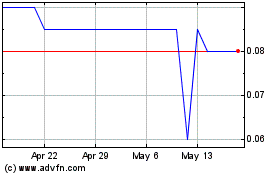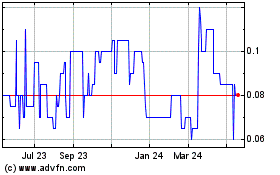Compass Gold Corp. (TSX-V: CVB) (Compass or
the Company) is pleased to provide an update on
the recently completed drilling at the Tarabala prospect, located
on the Company’s Sikasso Property in Southern Mali (
Figure
1).
Highlights
- Infill
drilling at Tarabala confirmed a broad, shallow gold target,
associated with a shear zone, extending at least 1-kilometre;
remains open down dip
-
Higher-grade mineralized zones were intercepted within wide
zones of low-grade mineralization
- Widest
and highest-grade discrete interval: 5 m @ 2.02 g/t Au
(from 23 m), incl. 1 m @ 6.77 g/t Au (from 24
m).
- Widest
interval: 17 m at 0.73 g/t Au (from 18 m), including 1 m @ 2.32 g/t
Au (from 28m) and 2 m @ 1.91 g/t Au (from 31 m)
- Results
expected in early March from three deeper reverse circulation (RC)
holes
Compass CEO, Larry Phillips,
said, “We continue to receive encouraging assay results from the
latest air core drill program at our Tarabala prospect, which
confirmed the presence of wide, shallow zones of gold
mineralization and continuity over at least one kilometre. We’re
awaiting the results from three RC drill holes we’ve just finished,
which were testing for deeper mineralization along this promising
target zone. At the same time, we’re aggressively executing our
drill program to the north and south of Tarabala, and preparing an
initial drill program on our Sodala and Dialéké prospects, both of
which are associated with strong soil anomalism and the presence of
artisanal workings.”
Dr. Sandy Archibald, PGeo, Technical
Director, added, “Drilling at Tarabala has again
underlined the strength of our exploration approach, including the
importance of ground geophysics, as these new mineralized intervals
were encountered where expected. Horizontal and vertical variation
is normal in this style of gold mineralization (shear-zone-hosted),
so I look forward to seeing the assay results from the three
pending RC drill holes at Tarabala to help us decide our next steps
there. Meanwhile, we have also finished drilling 3 km to the north
at our Massala prospect and are currently drilling the Assama
prospect, 5 km to the south of Tarabala. I am also eager to review
the first drill results from those prospects, the first of which we
hope to get in early March.”
Tarabala Drilling Results
Twenty-five (25) shallow air core (AC) holes
(1,328 m) and three deeper reverse circulation (RC) holes (344 m)
were drilled at Tarabala (Figure 1) in late January and early
February. This work tested the lateral extent, grade continuity,
and orientation of a wide zone of previously identified
near-surface mineralization over a distance of 1-km at the prospect
(See Compass press releases, June 15, 2020 and January 20, 2020).
Ten of the holes were drilled to test the continuation of the
mineralized structure 350 m to the north that had only be
partially tested. The three RC holes were drilled to test the
down-dip (open) extension to a vertical depth of up to 95 m at
three locations. Assay results from these holes are expected in
early March.
Fifteen (15) AC holes, SAAC106-120, were drilled
as five three-hole infill fences on the previously drilled
200 m fence spacing on a 1,000 m panel of the 2,300 m target
structure at Tarabala (Figure 2).
Gold mineralization was encountered where predicted by previous
drilling and Gradient Induced Polarization (IP) geophysics. The
widest interval identified was present in SAAC109 with 17 m
@ 0.73 g/t Au (from a depth of 18 m), which included two
higher grade zones (1 m @ 2.32 g/t Au [from 28 m] and 2 m @
1.91 g/t Au [from 31 m]; Table 1). This zone
is within a 750 m sub-panel where previous shallow low-grade
mineralized zones were identified, e.g., 18 m @ 0.43 g/t Au
(SAAC02), 14 m @ 1.24 g/t Au (SAAC36), and 26 m @ 0.47
g/t Au (SAAC36). Each of these zones has discrete higher-grade
intervals.
The highest grade of mineralization encountered
during the current drilling program was on the southernmost fence
(Figure 2). SAAC117 contained an interval with
5 m @ 2.02 g/t Au (from 23 m), which included
1 m @ 6.77 g/t Au (from 24 m).
From the ten holes drilled to test the northern
extension of the mineralized structure, three contained mineralized
intervals of 3 m (SAAC100, 102 and 104). The best interval was in
SAAC100, which contained 3 m @ 2.12 g/t Au (from
57 m), including 5.89 g/t Au. Mineralization was present in
most of the holes as isolated 1 m zones and was generally located
on the interpreted target structure.
Figure 1: Property
map showing the location of Tarabala and
Samagouela.https://www.globenewswire.com/NewsRoom/AttachmentNg/3188d30e-bd74-4b25-b6a6-a5f9fa262b00
Figure 2: Drilling
locations and significant results at Tarabala for the latest
drilling.https://www.globenewswire.com/NewsRoom/AttachmentNg/f51c296f-6d5c-4cc3-9317-817796babf2a
Three RC holes were drilled to test
mineralization encountered during the January drilling program. The
purpose of the drilling was to determine if mineralization is
present adjacent to the contact with the Tarabala fault, and also
test the down-dip extension of the open near-surface
mineralization. Results from these holes are pending, but are
expected to be received within two weeks.
Table 1. Mineralized intervals
greater than 3 m identified during recent drilling at Tarabala
|
Hole ID |
From (m) |
To (m) |
1, 2 Interval (m) |
Au (g/t) |
|
SAAC100 |
57 |
60 |
3 |
2.12 |
|
inc. |
58 |
59 |
1 |
5.89 |
|
SAAC102 |
21 |
24 |
3 |
0.48 |
|
SAAC104 |
30 |
31 |
3 |
0.40 |
|
SAAC109 |
18 |
35 |
17 |
0.73 |
|
inc. |
28 |
29 |
1 |
2.32 |
|
inc. |
31 |
32 |
2 |
1.91 |
|
SAAC110 |
48 |
51 |
3 |
0.45 |
|
SAAC114 |
22 |
26 |
4 |
0.46 |
|
SAAC114 |
32 |
39 |
7 |
0.48 |
|
SAAC115 |
23 |
28 |
5 |
2.02 |
|
inc. |
24 |
25 |
1 |
6.77 |
|
SAAC117 |
30 |
35 |
5 |
1.84 |
|
inc. |
31 |
32 |
1 |
7.69 |
|
SAAC118 |
59 |
62 |
3 |
0.63 |
1True thicknesses are interpreted as 70-90% of
stated intervals.2 Intervals use a 0.2-gram-per-tonne gold cut-off
value
Technical Details
All AC holes from Tarabala reported here were
drilled on an azimuth of 270° (towards the west), at dips of 55°,
with lengths varying from 42 to 72 m. These fences of
holes were to test structures interpreted from the Gradient IP
survey, and potential mineralized trends identified by earlier
drilling by Compass. Drilling was performed by Etasi and Co.
Drilling (Mali). All samples were prepared by Compass staff and an
appropriate number of standards, duplicates and blanks were
submitted and analysed for gold at SGS (Bamako, Mali) by fire
assay.
Next Steps
A 24-hole (1,200 m) drilling program has been
completed at Massala, located 3 km north of the Tarabala area, and
assays are pending. A 23-hole (1,270 m) drilling program is
underway at the Assama prospect, 5 km to the south of Tarabala.
Both target areas are associated with the Tarabala fault, moderate
soil anomalism, and active and historic artisanal activity.
Drilling pads are currently being prepared at
Sodala and Dialéké (on the Farabakoura Trend; Figure 1).
Ongoing in-fill shallow soil sampling and ground
geophysics are continuing on other parts of the Sikasso property,
and new targets are continually being appraised and identified.
About Compass Gold Corp.
Compass, a public company having been
incorporated into Ontario, is a Tier 2 issuer on the TSX- V.
Through the 2017 acquisition of MGE and Malian subsidiaries,
Compass holds gold exploration permits located in Mali that
comprise the Sikasso Property. The exploration permits are located
in three sites in southern Mali with a combined land holding of 867
sq. km. The Sikasso Property is located in the same region as
several multi-million-ounce gold projects, including Morila, Syama,
Kalana and Komana. The Company’s Mali-based technical team, led in
the field by Dr. Madani Diallo and under the supervision of Dr.
Sandy Archibald, P.Geo, is conducting the current exploration
program. They are examining numerous anomalies first noted in Dr.
Archibald’s August 2017 “National Instrument 43-101 Technical
Report on the Sikasso Property, Southern Mali.”
QAQC
All AC samples were collected following industry
best practices, and an appropriate number and type of certified
reference materials (standards), blanks and duplicates were
inserted to ensure an effective QAQC program was carried out. The 1
m interval samples were prepared and analyzed at SGS SARL (Bamako,
Mali) by fire assay technique FAE505. All standard and blank
results were reviewed to ensure no failures were detected.
Qualified Person
This news release has been reviewed and approved
by EurGeol. Dr. Sandy Archibald, P.Geo, Compass’s Technical
Director, who is the Qualified Person for the technical information
in this news release under National Instrument 43-101
standards.
Forward‐Looking InformationThis
news release contains "forward‐looking information" within the
meaning of applicable securities laws, including statements
regarding the Company’s planned exploration work and management
appointments. Readers are cautioned not to place undue reliance on
forward‐looking information. Actual results and developments may
differ materially from those contemplated by such information. The
statements in this news release are made as of the date hereof. The
Company undertakes no obligation to update forward‐looking
information except as required by applicable law.
For further information please contact:
|
Compass Gold Corporation |
Compass Gold Corporation |
|
Larry Phillips – Pres. & CEO |
Greg Taylor – Dir. Investor Relations & Corporate
Communications |
|
lphillips@compassgoldcorp.com |
gtaylor@compassgoldcorp.com |
|
T: +1 416-596-0996 X 302 |
T: +1 416-596-0996 X 301 |
Website: www.compassgoldcorp.com
NEITHER THE TSX VENTURE EXCHANGE NOR ITS
REGULATION SERVICES PROVIDER (AS THAT TERM IS DEFINED IN THE
POLICIES OF THE TSX VENTURE EXCHANGE) ACCEPTS RESPONSIBILITY FOR
THE ADEQUACY OR ACCURACY OF THIS RELEASE.
Compass Gold (TSXV:CVB)
Historical Stock Chart
From Dec 2024 to Jan 2025

Compass Gold (TSXV:CVB)
Historical Stock Chart
From Jan 2024 to Jan 2025
